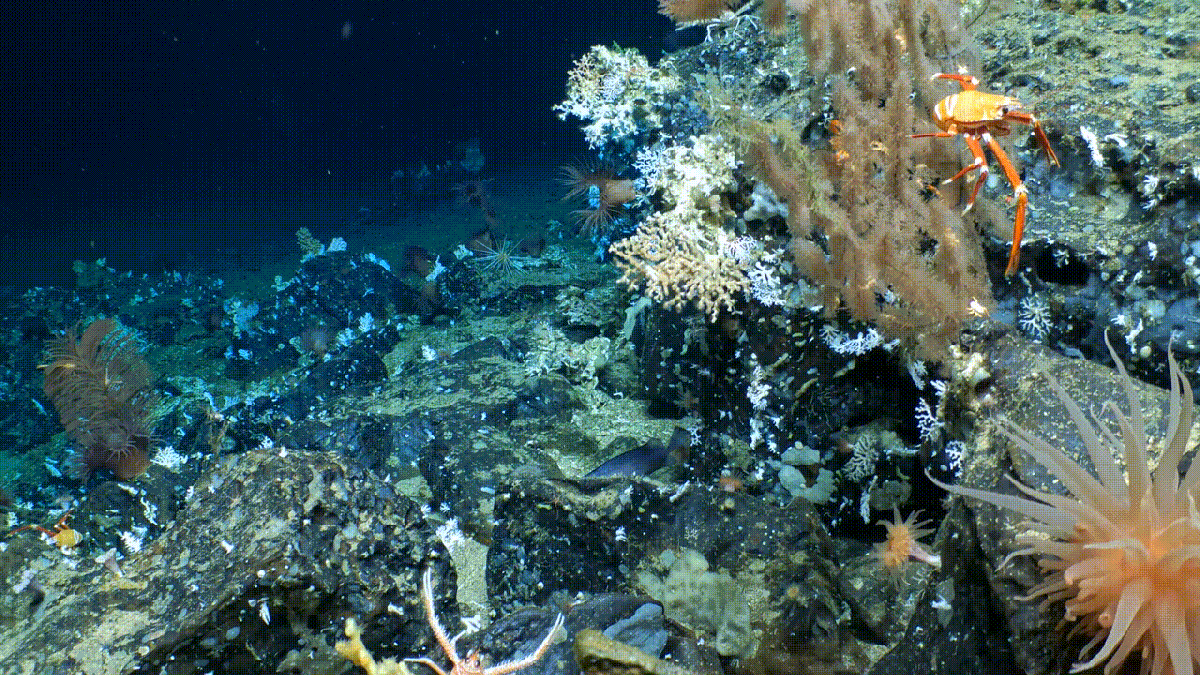
There’s a new, ancient coral reef in town, and it’s magnificent. Scientists working to survey the deep ocean surrounding the Galápagos Islands discovered a never-before-observed reef complex, hundreds of meters below the sea surface. And, despite the current, sorry state of corals across the world’s marine ecosystems, this newly documented (but likely very old) reef appears to be thriving.
“The reef is pristine and teeming with life,” said Michelle Taylor, a deep-sea marine biologist at the University of Essex and one of the scientists leading the exploratory expedition, in a Woods Hole Oceanographic Institute press statement published this week. Taylor and one of her co-researchers came upon the coral within the Galápagos Marine Reserve during a human occupied vehicle (HOV) dive. The dive occurred on just one day of the larger, multi-institute Galápagos Deep 2023 endeavor.
Inside the small submersible craft, the two scientists had front-row seats to a previously unmapped part of the seafloor. As the HOV (named Alvin) crested the ridge of an underwater volcano, the reef unfolded in front of them. It was “an amazing live orange carpet for as far as the eye could see,” Taylor told Gizmodo in an email. “Scorpion fish, squat lobsters waving their long gangly arms around, spiky sea urchins, and a number of pink octopus all wandered past the windows of Alvin as we were surveying the area.”
Normally, deep-sea reefs have a relatively low proportion of coral coverage, about 10-20%, per the news release. But this system stands out for its particular vigor: an estimated 50-60% live coral in many areas, which Taylor described to Gizmodo as “rare” and “really unusual.”
“It is very unusual to find a thriving deep-sea coral reef with so little evidence of human influence,” she further said. “In other surveyed deep-sea reef areas, there are often examples of lost fishing gear, rubbish such as cans, bottles, and plastic bags, or even areas that have obviously been trawled and thus cleared of all their reef structure. However, this reef was pristine; just a dense mass of layers of ancient coral with a frosting of live coral across the top.”
Other, shallow-water reefs throughout the archipelago haven’t faired as well. Prior to this week’s discovery, Wellington Reef off the coast of Darwin Island was believed to be one of the few corals in the region to have survived a 1982-1983 El Niño-associated warming event, according to the press release. But the new find suggests that other yet unknown reef communities could be persisting in the Galápagos.
There are a few reasons the scientists believe the exceptional reef has stayed so intact and vibrant. For one, the Galápagos Marine Reserve was declared in 1998, protecting the area from a boom in industrial fishing and bottom trawling—which can trash thousands of years of coral reef growth in the course of a single day, said Stuart Banks in an email to Gizmodo. He is an oceanographer at the Charles Darwin Foundation and was the second scientist present in the HOV during the discovery.
Then, there are the ocean currents that make the whole Galápagos marine system so productive, Banks added. Finally, deep water reefs are less affected by heat stress and bleaching known to decimate shallow corals. Yet, over the long term, even the deepest reefs aren’t immune from the threat of climate change, the oceanographer noted.
Finding the new coral ecosystem is the first step to better protecting it, Banks said. “We can only help protect these areas once we understand what’s there, how they have changed over time, and how they are connected.”
Plus, monitoring this reef could improve the prospects for other corals worldwide. “This newly discovered reef is potentially an area of global significance,” said Taylor in the press statement. It’s “a canary in the mine for other reefs globally – a site we can monitor over time to see how a pristine habitat evolves with our current climate crisis.”
Click through to see more of this spectacular undersea discovery.
Services Marketplace – Listings, Bookings & Reviews